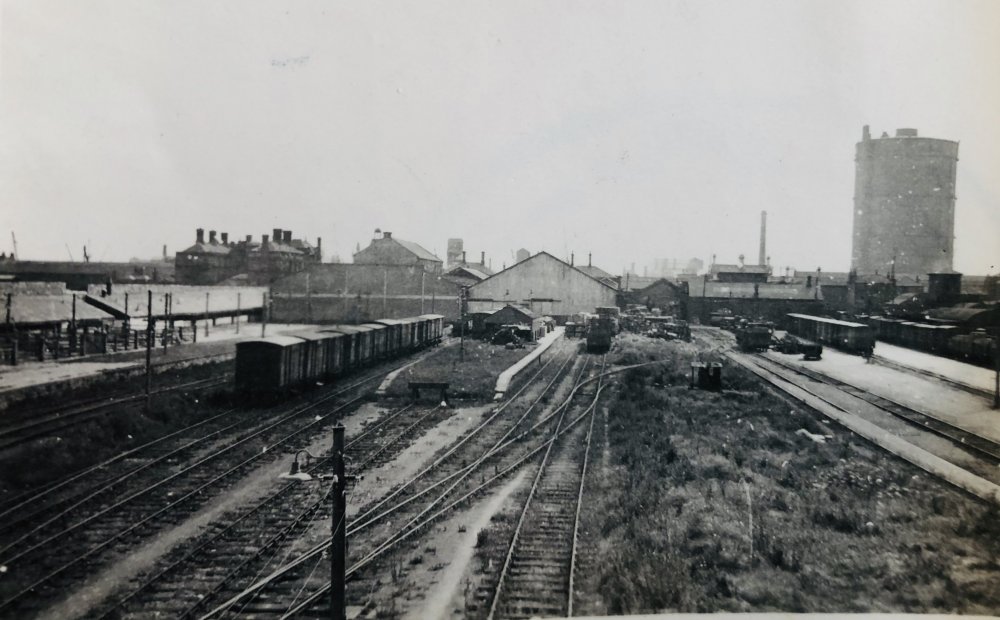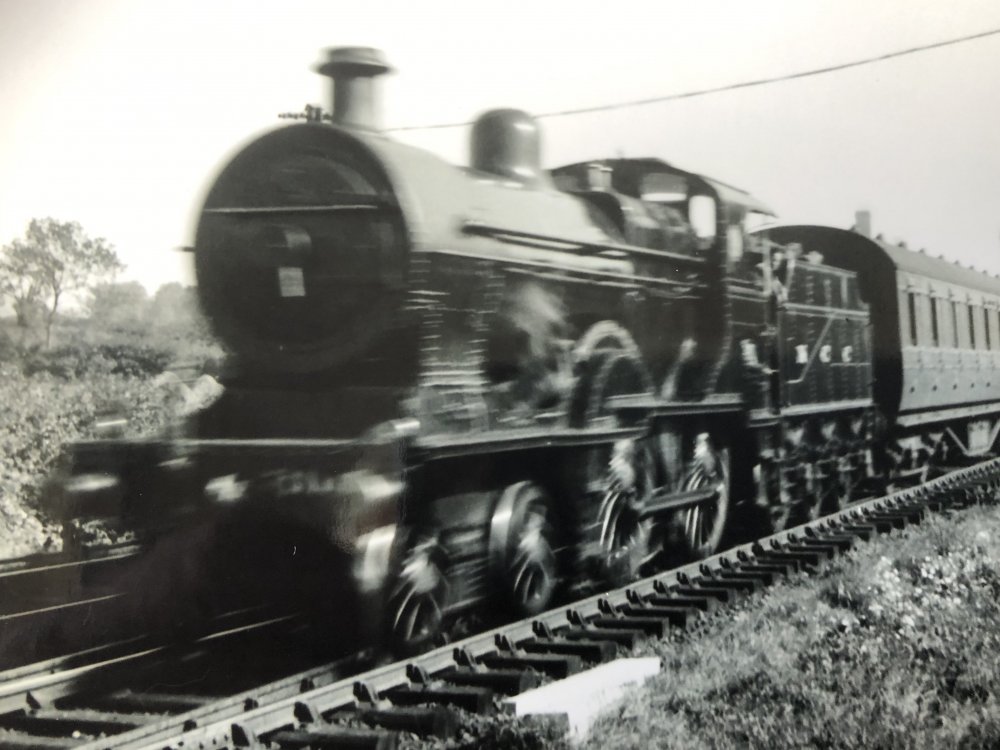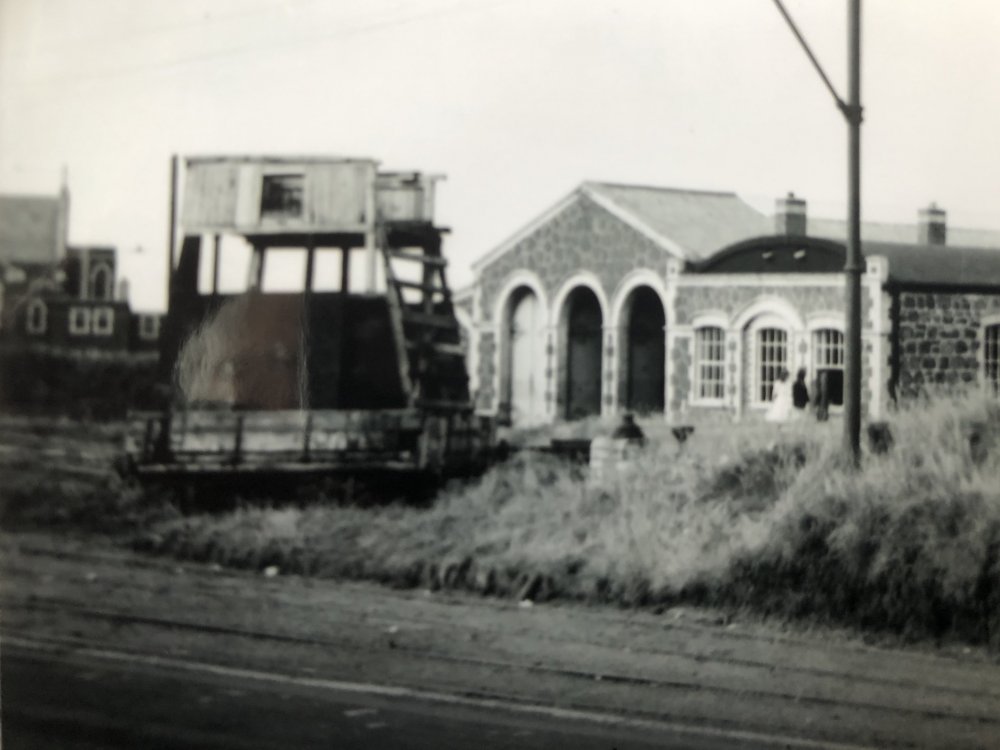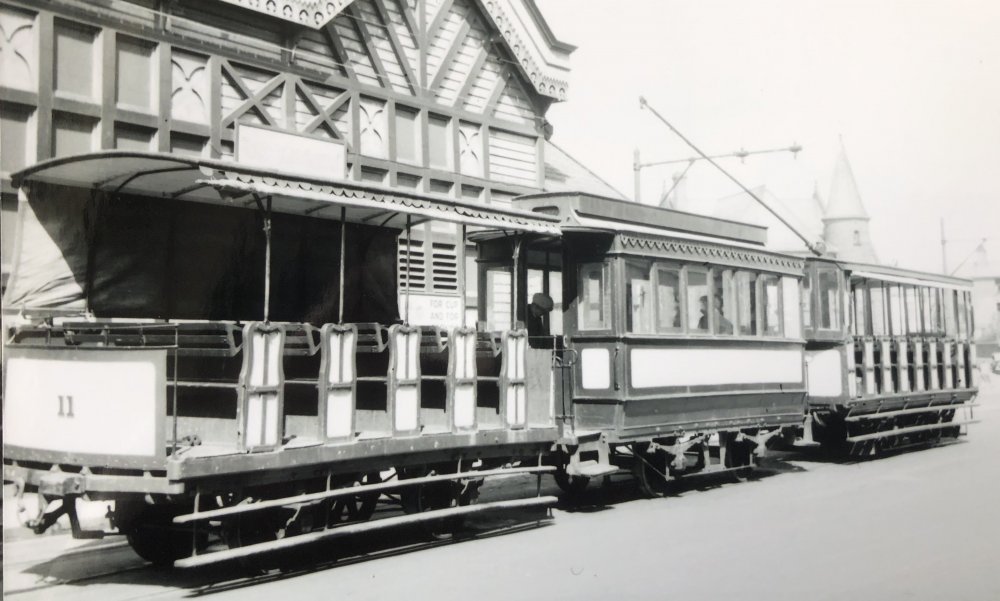-
Posts
15,831 -
Joined
-
Last visited
-
Days Won
393
Content Type
Profiles
Forums
Events
Gallery
Blogs
Store
Community Map
Everything posted by jhb171achill
-
Your vac one will be bauxite, yes. Thr chassis colour was one of a few matters in which the NCC differed from the “narrow gauge” LMS across the pond, where just about everything had a black chassis. I suspect that the NCC followed the more Irish tradition of the BNCR. As I gradually go through Senior’s pics, many of which I’m posting here by degrees, I’ll see if anything illustrates this. As you say, colour pics just ain’t gonna happen! While a tiny few exist (GNR in particular) in the late 1940s, both Ballycastle and Ballyclare were, of course, gone by 1950. The NCC had two distinct lettering styles, depending on when..... they used a different font from the early 1940s. Which period is your model - pre or post 1940? As an aside, the most obvious ways in which LMS (parent) and NCC liveries differed were lettering on tenders, and on carriages, many more secondary ones here than in Britain had no crests*, no lining or neither. (* particularly in the last 5-10 years)
-
You’re getting warm..... that general area.
-
Mark I’m unaware of any wagon stock list but I will delve and if I find out anything I’ll get back to you. No, not all vans had ploughs - the plough van was a different animal and would have only been out with ballast trains.
- 309 replies
-
- 1
-

-
- mgwr
- 21mm gauge
-
(and 1 more)
Tagged with:
-
I’ll do a diagram of the lettering later on and post it here. The chassis would be the same bauxite colour. Any of these that were unfitted were grey all over; fitted grey or bauxite. Beautiful model by the way!
-
-
Now that's a good point, NIR. After the Shore Road motorway was built, with the stuff that the last few "WT" class tank engines hauled down from Magheramorne, there were further movements out of there, using diesels. I have seen a pic of a Hunslet with a string of spoil wagons behind it and while I could be mistaken, I don't think it was a ballast train. I also seem to recall being told of the little Hunslet 0.6.0 shunters hauling them about somewhere, but that probably WAS ballast. Any ideas? As Michael Caine, or Trumpty Dumpty might say, "Not a lot of people know that"!
-
Wow!! What is that? Is it the RDS show about the turn of the last century?
-
MURPHY MODELS ... VIVA LA SPAIN....
jhb171achill replied to burnthebox's topic in For Sale or Wanted
I wonder is this thing N, H0 or 00? https://muy.spraytanfresno.com/index.php?main_page=product_info&products_id=30283 -
Actually, you're right - I see that now!
-
Yes (and the C & L, a century ahead of their time, painted at least a couple of open wagons YELLOW for ballast trains!), the beige colour would have been current in 1900-05. Certainly after 1925, but possible as early as the mid 1910s, they became standard grey with white lettering. It would seem that they had black lettering when beige; I do not know whether the chassis was the same beige, or black. It was usual, as well known, for Irish companies to paint wagon chassis the same as the body colour, but there some exceptions. As for the lettering, I cannot be sure, but it is possible they only had the normal "M G W (number)". Most old photos of most maintenance vehicles I've ever seen tend to have "P W DEPT." rather than "Engineering" - and in a model I'd be more inclined to go for that - or, even, only use "M G W" and a number, pending anything more specific turning up. Sorry that's the best that I can do! I assume a ballast plough would be the same beige, or possibly the brown that some vans were then. It would not be green. I will have a poke about tonight and see if I can find anything else.
- 309 replies
-
- 1
-

-
- mgwr
- 21mm gauge
-
(and 1 more)
Tagged with:
-
Correct - the pic was some time in the mid 30s - after 1940, any "shiny" engines would have been in the unlined black livery too. I would certainly think it's one of the 1924 stock. Hard to make out 100% though. I noticed a white patch on the smokebox door - anyone have any ideas as to what that might be? I don't. That would be a typo - very definitely 2nd!
-
Fifty years ago to the day, today, NIR operated the last ever steam train in service with a company-owned locomotive in Ireland. I was there to see it. Over thirty years earlier, also on the NCC, Senior spotted a gleaming maroon just-out-of-the-paint shop U2 hurrying itself along. Location unknown, but would appear to be either between Belfast and Whitehead, or more likely Belfast - Ballymena, as I think his earliest spin on the NCC was on the main line. I
-
I will still state that the most comfortable railcars are the old GNR / CIE AECs, providing we're talking original seats here, of course, and the modern NIR 4K and 3K types. And the worst by far were the MEDs and "Castle (Cattle) Class" or 450s of NIR. Ghastly things, both of 'em. Warb, is that an MIR kit for the 80 class? Very well made.
-
I am not known for my joy at seeing modern railcars, but I have to say from recent jaunts on the Cobh line over the last half-dozen years, they've grown on me a bit - and I did like the 2700s, strangely enough. The noise a 2600 makes going up the tunnel en route to Mallow is something else - so many suburban railcars don't ever get a chance to properly stretch their legs!
-
Nothing was scrapped in this way as Eoin says. If ever Fry scrapped anything, it would have been because he dropped it on the floor and it bent while he was building it! And given his levels of skill and care, that's unlikely.
-
Bianconi, Annaghmore, Cork City, Bessbrook, Giant's Causeway and Lucan were the ones I had in mind. I did not count Belfast (or Dublin, other than Lucan!) And not the LUAS either.... naturally, by Irish standards, all of these are narrow gauge too! I have an idea there was some sort of short-lived thing out in the wilds of Leitrim or Longford or somewhere - I remember reading of such a thing years and years ago. Must look it up.
-
3ft gauge. One of the few electric narrow gauge lines. Quiz question: how many narrow-gauge electric lines were there, including tramways? I can think of six.....
-
We’re up north today. A Giants Causeway tram awaits departure from Portrush station, and a strange vehicle is parked up at the depot nearby. This was a wagon for inspecting overhead wires. These pictures were taken in 1939.
-
It’s grey now. Last yellow / black / silver one was about 18 months ago.
-
Ah, that. I thought the comment referred to maybe hooks for holding the ropes of the tarpaulins. I have no idea what the above castings were. As you say, probably too small for grain, and I think in any case it’s almost certain that bulk grain wasn’t carried in vehicles like these.....
- 309 replies
-
- mgwr
- 21mm gauge
-
(and 1 more)
Tagged with:
-
Ah, I was imagining you only had a very small space. You'll pack in a full terminus station on that size of board.
-
Which photo? I think I know what you're looking at but can you confirm....
- 309 replies
-
- mgwr
- 21mm gauge
-
(and 1 more)
Tagged with:
-
The A and C class were all cream inside. 121s were very light grey as were any 141s I was ever in. I don't remember what B101s were like inside as I only ever had one footplate ride in one. I have pics of the inside of a C somewhere, but I will have to search. If and when I come across them I will post them. I have a notion that the very oldest ones, the B113 duo, had cream upper and mid brown lower, like the cab of a steam engine, but again I would have to do some considerable delving! The G class were light grey lower, cream upper, as at Downpatrick, as far as I remember. E class - I'm not sure, but the DCDR could help - I think light grey. Again, I've a photo SOMEwhere!
-
Imahilus, here’s a suggestion. You want it small, dock setting and shunting-orientated. 1. Sea (harbour wall) 2. Sidings set in concrete or cobblestones on the quayside, for bringing wagons alongside unloading ships. 3. Loco shed for dock shunting loco? 4. Siding into some sort of small warehouse (a different / additional type of traffic?) 5. Run round loop. 6. Platform road. 7. A platform - could be short passenger platform to allow, say, a two-car railcar set to shuttle back and forth, or a goods platform with warehouse. 8. Line disappears through archway or tunnel mouth (like Cork) to go to / from a simple fiddle yard.
-
Brilliant! I was there for a month or so, and I learned it back then, though I've forgotten most now. It's a surprisingly easy language to learn, and pronunciation is easy. Good for when you wanted to say "I would like to see round the steam engine shed. Would you like some European cigarettes?"..... Anyway, I'm off topic...
.png.c363cdf5c3fb7955cd92a55eb6dbbae0.png)







